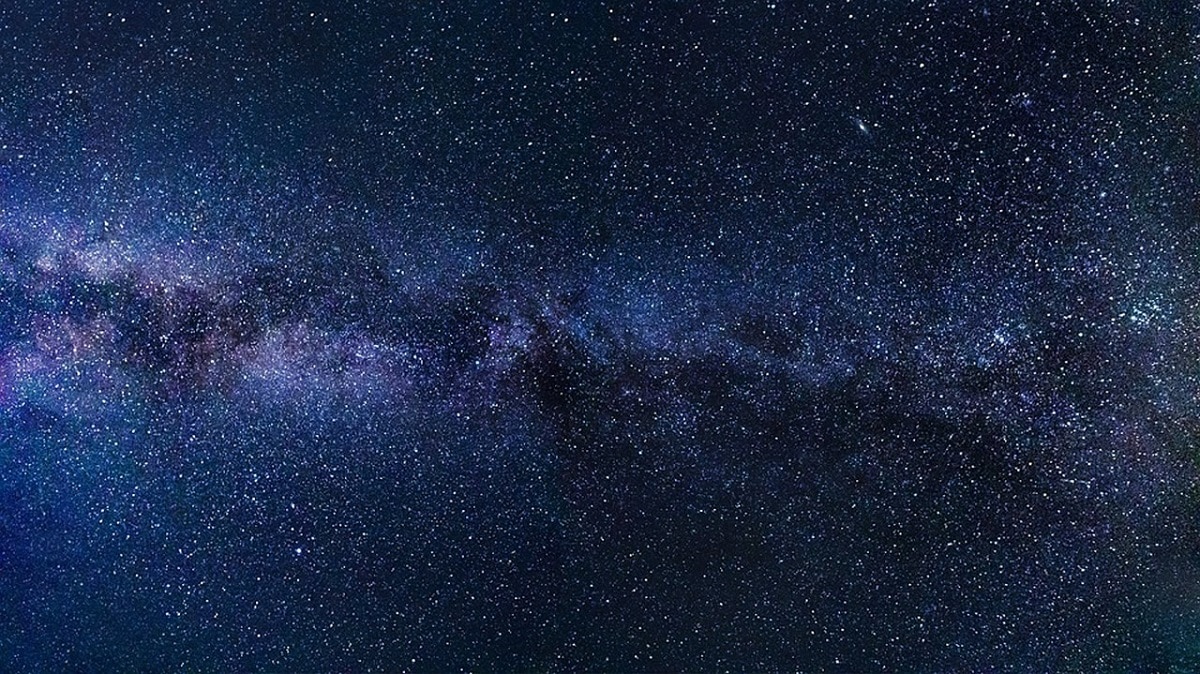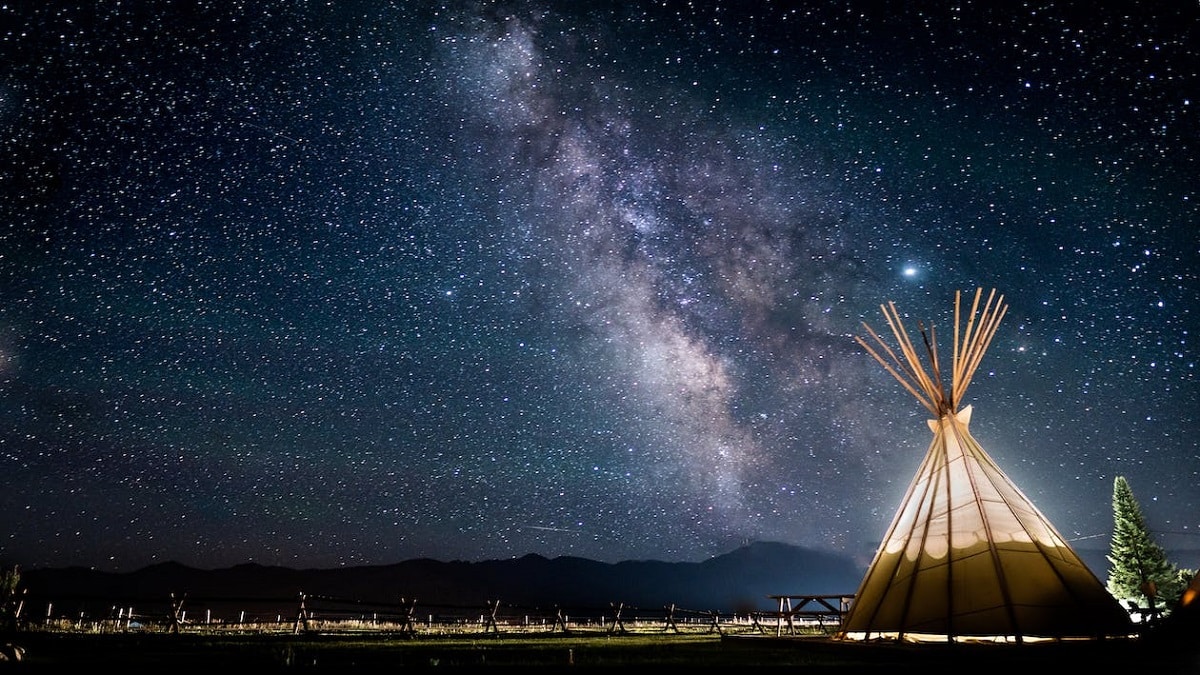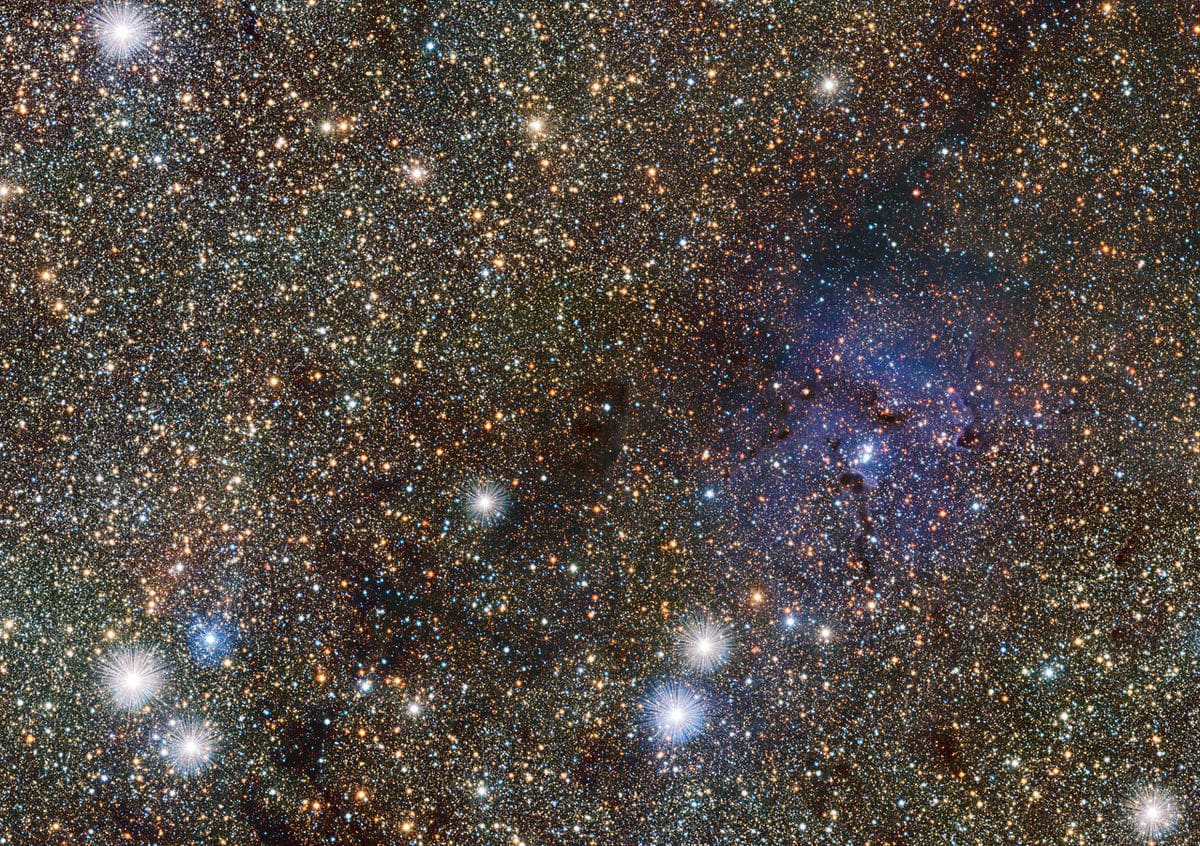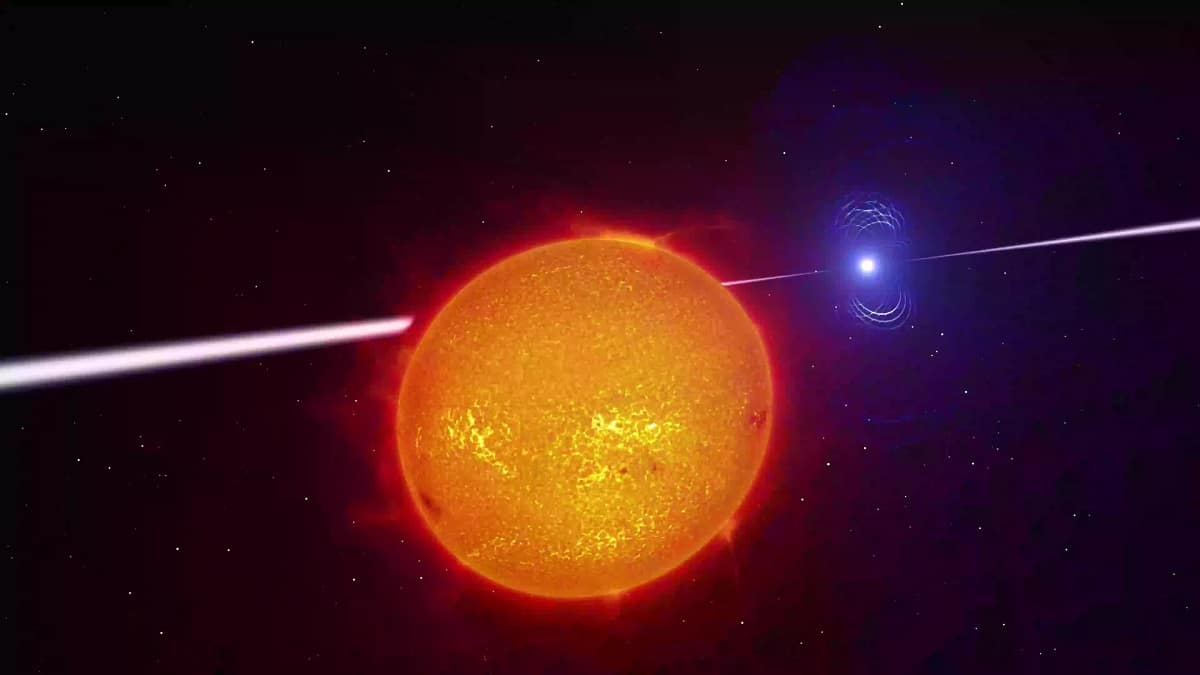
Surely when you look at the night sky you can see the billions of stars that make up the firmament. One of the curiosities that stars have, unlike planets and other satellites, is that they blink. That is, it looks like they are flashing continuously. many people wonder why do the stars twinkle and the planets do not.
For this reason, we are going to dedicate this article to telling you why the stars blink and why they do so.
why do the stars twinkle

Everything outside of the atmosphere flickers (yes, that includes the sun, moon, and planets in our solar system). This effect occurs when starlight interacts with air masses. In our case, that air mass is the atmosphere, which is full of turbulence. This causes light to constantly refract in different ways, so that the light from the star is in one place from our vantage point on the surface, and after a few milliseconds it appears to change slightly.
Why don't we notice the twinkling of the planets, the sun and the moon? It's easy to explain. Due to our distance from them (the nearest star, Proxima Centauri, is just over 4 light-years away), these stars appear to be mere points of light. Since only a point of light reaches the atmosphere, it can be greatly affected by turbulence in the air and will therefore continue to flash. In addition to being closer, the planets appear as disks (although not to the naked eye), which makes the light more stable (whereas the Moon and Sun are much larger, so the effect is imperceptible).
Some stars seem to change color

Some days, around midnight, the quintuple star (one of the brightest stars we can see in the sky) is above the horizon (in the N-NE direction), but close enough so that it appears that in addition to blinkingalso wears out. On a wide variety of colors (red, blue, green...). This is a fairly common phenomenon, easily observed in stars near the horizon, but also seen in other stars.
The explanation is the same as for flickering, but we add that the amount of air that light has to travel towards us is much greater, so refraction is more pronounced, which also makes the stars appear to constantly change color. Also, although they don't usually flicker, planets can also emit this changing light if they are very close to the horizon.
How to avoid flicker

Although the blinking of the stars does not mean any kind of inconvenience for us, for astronomers things can change a lot. We have many observatories on the surface of the Earth, for so we must remove this distortion to see the stars. To do this, some of the most advanced telescopes on Earth use adaptive optics, rotating the telescope's mirrors many times per second to compensate for turbulence in the atmosphere.
Astronomers project a laser into the sky, creating an artificial star within the telescope's field of view. Now that you know what the artificial star should look like and what color, all you have to do is to adjust the distortion of the mirror with a piston to eliminate the effects of atmospheric distortion. It's not as efficient as launching a telescope into space, but it's a lot cheaper and seems to serve our needs well.
Another option, as you have seen, is to launch the telescope directly into outer space. Without the intervening atmosphere, the flicker disappears completely. Probably the two most famous space telescopes are Hubble and Kepler.
In size, Hubble is much smaller than the telescopes we have on Earth (actually, it's about a quarter the size of a large observatory's telescope mirror), but without the effects of atmospheric distortion, is capable of capturing images of galaxies of billions of light - in a few years. You just have to look in that direction long enough to receive light from it.
Also, some telescopes have a small secondary mirror that corrects for this atmospheric turbulence, but this is not common. That is, the process is as I told you, but the distortion does not occur in the main mirror, but in the small mirror that is part of the tool that we use to see.
The stars change intensity
You may have heard that stars twinkle because they emit different amounts of light. While true, the change is not so noticeable as to cause the night sky to flicker, and it occurs over a longer period of time rather than a few seconds. In fact, some of these stars are known to vary in brightness and size, and we use them to help us better explore the universe. In a nutshell: stars twinkle because the planet's atmosphere distorts their light before it reaches us.
Since they are so far away, we can only see tiny droplets of light, so this distortion occurs, and the closer you get to the horizon, the more pronounced this distortion will be. In the case of the planets, although they appear larger to the naked eye, they appear to us as small discs of light, and enough light reaches the atmosphere so that the distortion of the light caused by the atmosphere is imperceptible.
Why the stars twinkle: the atmosphere
The light that leaves the star and travels far to Earth is barely bent. Drive in a straight line. When it has to go through the atmosphere, its trajectory changes. Although the atmosphere is transparent, it is not a layer of uniform density. The parts closest to the surface are denser than the upper layers. In addition, warm air rises during the day, which is less dense than cold air. All this causes the atmosphere to become turbulent gas. We insist, albeit transparently.
When the light from the stars is about to reach us, it has to pass through the atmosphere. It deviates slightly each time it encounters layers of air of different densities. It refracts when changing from a medium of one density to another. And so on, continuously. Since the air is in constant motion, we think that the little dance the stars do is also constant, giving the impression that they are twinkling. These small deviations can also cause them to change color, much like the sun does when it sets on the horizon.
I hope that with this information you can learn more about why the stars blink and the planets do not.